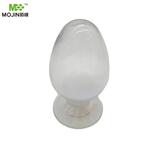Tetrahydrocurcumin (THC), the active metabolite of curcumin, is gaining popularity amongst scientist due to its wide spectrum of pharmacological activities, better stability and colourless nature. Tetrahydrocurcumin has a similar structure to that of curcumin. THC lacks the α, β-unsaturated carbonyl moiety in its chemical structure. It is naturally sourced from the roots of Curcuma zedoaria, Zingiber mioga, and Zingiber officinale and has potent antioxidant activity and depigmentation of the skin. THC is being studied for the treatment of cancer and dementia. THC is also known to epigenetically ameliorate mitochondrial dysfunction in brain vasculature during Ischemic Stroke. Tetrahydrocurcumin (THC) has been used as a neuroprotective agent to study its therapeutic potential in improving mitochondrial dysfunction in the ischemic stroke mice model.
Off-white crystalline powder or Yellow Solid, soluble in methanol, ethanol, DMSO and other organic solvents, derived from turmeric bulbs.
Tetrahydrocurcumin is an antioxidant and skin-whitening ingredient. It is a major curcuminoid metabolite of curcumin that has been shown to have protective effects against diabetes and vascular dysfunction via alleviation of oxidative stress.The interest in tetrahydrocurcumin research is increasing because it is superior to curcumin in its solubility in water, chemical stability, bioavailability, and anti-oxidative activity. Curcumin metabolizes into tetrahydrocurcumin by bacterial enzyme NADPH-dependent curcumin reductase in the intestine.
ChEBI: Tetrahydrocurcumin is a beta-diketone that is curcumin in which both of the double bonds have been reduced to single bonds. It has a role as a metabolite. It is a beta-diketone, a polyphenol and a diarylheptanoid. It derives from a curcumin.
Tetrahydrocurcumin can also be chemically synthesized from curcumin by catalytic hydrogenation using PtO2 or palladium as a catalyst.
One gram (1.0 g) of curcumin was dissolved in 20 ml of acetone and placed in a 100-ml glass reactor for reduction, to which was then added 500 mg of activated Raney-nickel catalyst. Subsequently, the atmosphere of the reactor was replaced for hydrogen gas by the routine method. A rubber-made balloon filled with hydrogen gas was arranged on the upper portion of the reactor in order to keep hydrogen gas pressure constant in the reactor by supplying hydrogen gas to make up for the consumed amount of hydrogen gas. The reactor was stirred while maintained at a given temperature in a constant-temperature water bath kept at 30° C. for 2-hour reduction.
After completion of the reaction, the Raney-nickel catalyst was removed from the solution by filtering, which was then evaporated and dried by concentration under reduced pressure and was dissolved again in a small amount of acetone.
Subsequently, the eluate was concentrated and dried under reduced pressure to obtain 674 mg of tetrahydrocurcumin.
Method for making tetrahydrocurcumin and a substance containing the antioxidative substance tetrahydrocurcumin
Tetrahydrocurcumin (ultra pure whitening element) is a natural functional whitening ingredient extracted from the roots of Ginger Curcuma longa. It has strong activity of inhibiting tyrosinase. The whitening effect is better than that of arbutin. It can effectively inhibit the generation of oxygen free radicals and remove the formed free radicals. It has obvious antioxidant, inhibits melanin, repairs freckle, anti-inflammatory activity, blocks the inflammatory process, etc. In addition, tetrahydrocurcumin has potent antioxidant activity and potential anti-aging benefits.
Tetrahydrocurcumin is a metabolite of curcumin that has diverse biological activities, including antioxidant, anti-inflammatory, anti-angiogenic, and anticancer properties. It scavenges 2,2-diphenyl-1-picrylhydrazyl (DPPH) radicals in a cell-free assay with an EC50 value of 16.8 μM. Tetrahydrocurcumin (50 μM) inhibits LPS-induced increases in inducible nitric oxide synthase (iNOS) and COX-2 expression in RAW 264.7 cells. It also inhibits LPS-induced increases in TNF-α release when used at a concentration of 100 μM and increases in nitric oxide (NO) production and IL-6 levels in a concentration-dependent manner. Tetrahydrocurcumin reduces carrageenan-induced paw edema in rats (ED50 = 20 mg/kg). It also reduces the formation of neocapillaries and decreases microvascular density as well as VEGF, VEGF receptor 2 (VEGFR2), and hypoxia-inducible factor-1α (HIF-1α) expression in a CaSki cervical cancer nude mouse xenograft model when administered at doses of 100, 300, and 500 mg/kg.
COX | Caspase | p38MAPK | Bcl-2/Bax | p21 | VEGFR | HIF



